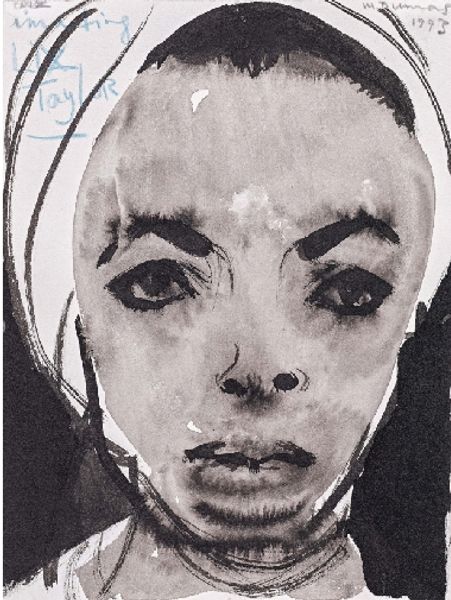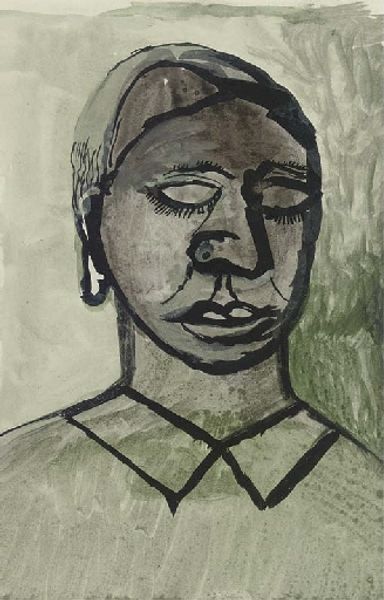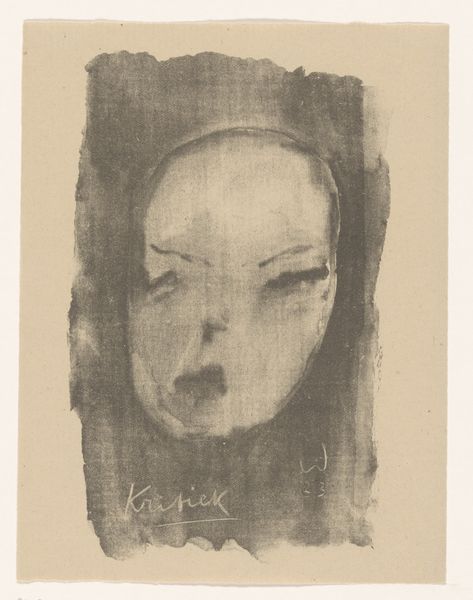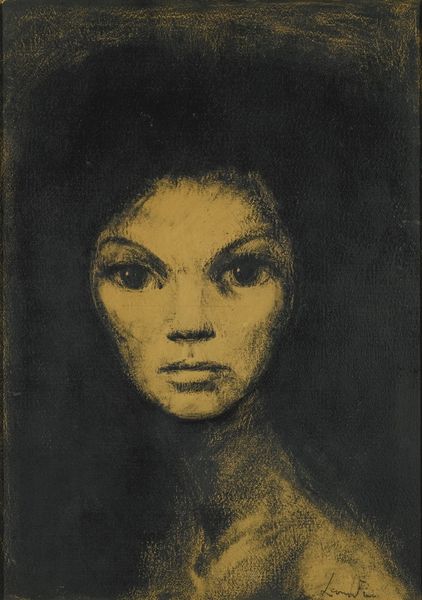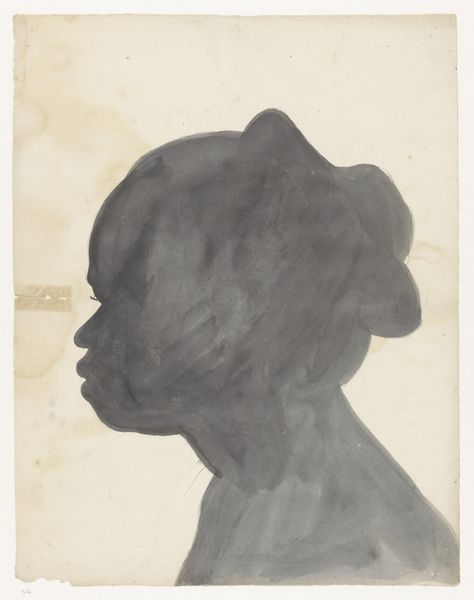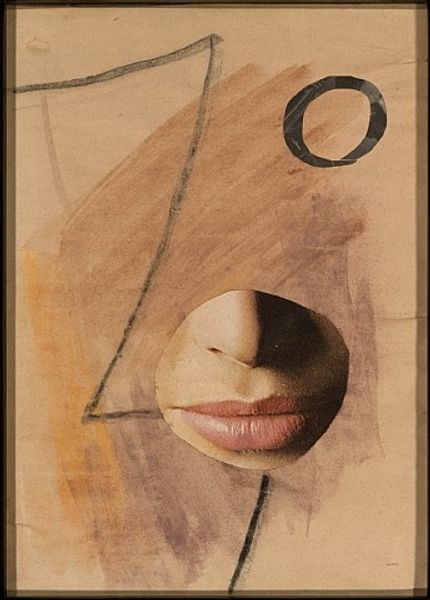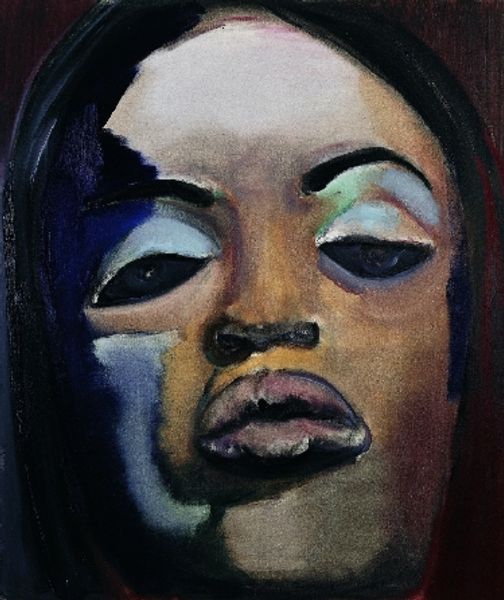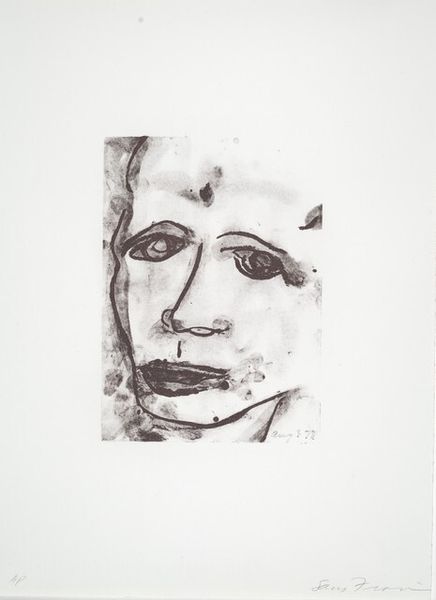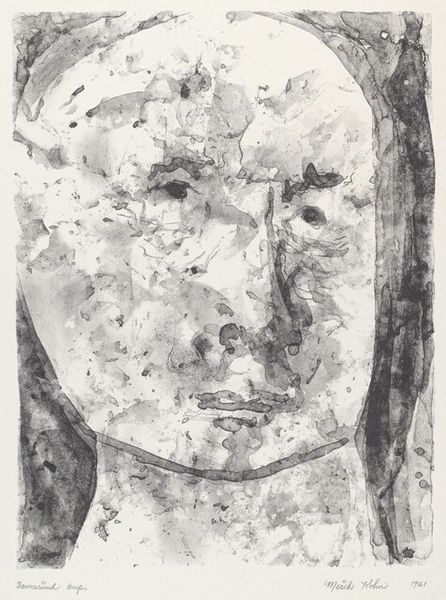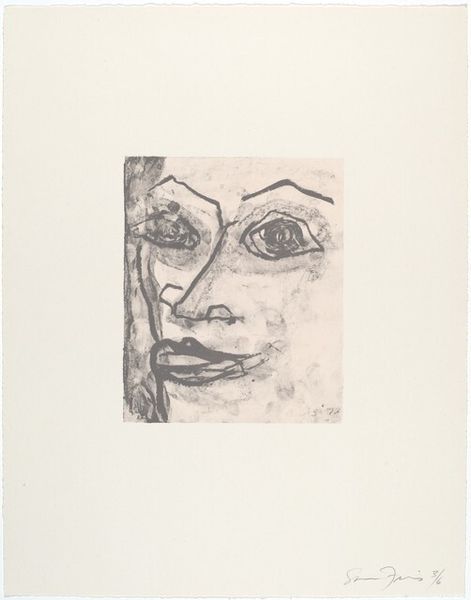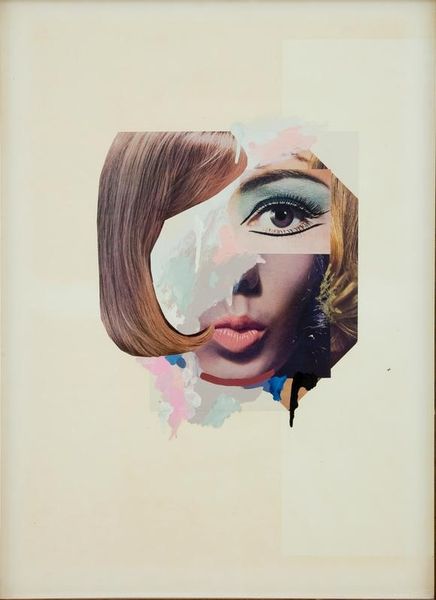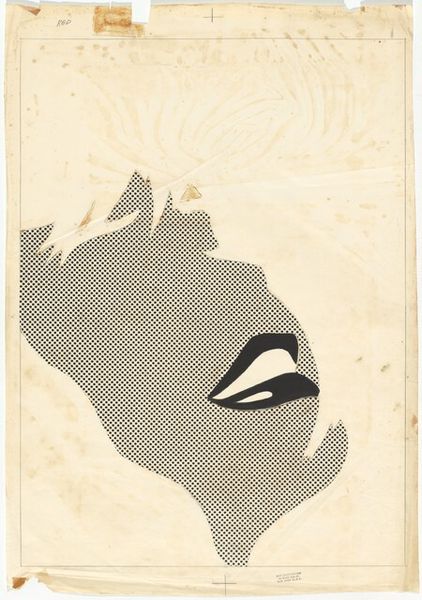
Copyright: Marlene Dumas,Fair Use
Curator: Standing before us, we have Marlene Dumas’s "The Supermodel" created in 1995. It’s a print, likely utilizing acrylic paint to achieve its distinctive monochrome aesthetic, that portrays a captivating, albeit slightly unsettling, portrait. Editor: My initial reaction is one of quiet melancholy. The muted tones and downward gaze of the subject convey a sense of vulnerability that starkly contrasts with the title. Curator: That's a perceptive observation. Dumas consistently grapples with the construction of identity, and this piece challenges the glamorous facade often associated with supermodels. It prompts a critique of how these figures are manufactured and consumed within the art world, the beauty industry, and media. Editor: Absolutely. You can sense the weight of that expectation in the eyes of the supermodel, the burden of an imposed image. This work, being rendered in shades of grey, drains out all of the vibrant color that might reinforce the superficiality and celebrates how postmodernism captures and portrays our own contemporary state of disarray and confusion. The cropping of the head also feels quite intentional, framing only her face in what looks to be in distress. Curator: Precisely! And the somewhat distorted features coupled with the absence of conventional beauty markers force us to consider the emotional toll that fame and objectification exact on individuals placed on a pedestal. Editor: Beyond just emotional, though, Dumas compels us to confront the pervasive commodification and deconstruction of the female form. By presenting a supermodel this way, she unveils a quiet violence inherent to idealizing and scrutinizing women’s bodies in the broader landscape of art history, celebrity culture and society as a whole. Curator: These concepts certainly feel relevant as she gained notoriety during the rise of postmodernism, especially given her interest in questioning traditional aesthetics and social structures. Dumas uses her subjects, whether they are supermodels, children, or historical figures, to probe psychological and existential depths of her work. Editor: It truly prompts a reflection on the gap between the constructed image and the individual's lived reality and all that those elements are. The history, labor, the politics—it is such a strong contrast and it shows the ways these models and celebrities get caught between the worlds of commercial and art. Curator: Indeed. This print provides not just an artistic commentary, but also offers a moment of quiet contemplation on the burdens of fame and constructed identity within consumerist culture. Editor: Exactly, and now when I see Dumas' work, I think about a career that offers complexity of art. The piece speaks to many different kinds of audiences from that period, but especially to ours in the 21st century.
Comments
No comments
Be the first to comment and join the conversation on the ultimate creative platform.
